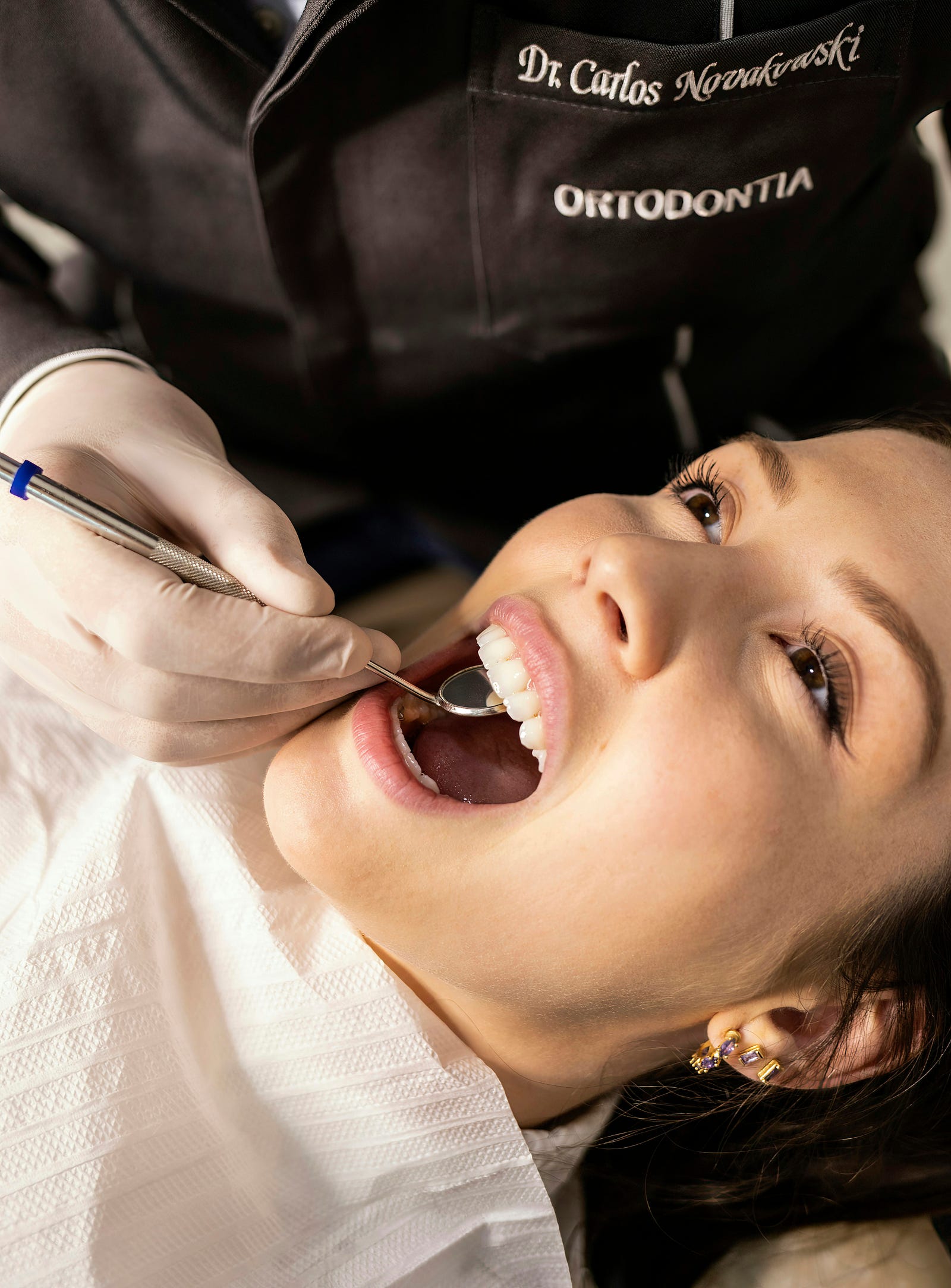Is excessive weed use linked to head and neck cancer?
One of my recent patients asked me if I thought his marijuana use had something to do with his head and neck cancer.
I could not provide a good, evidence-based answer.
Now, I have more information.
A recent retrospective study has uncovered a concerning link between cannabis use and head and neck cancer.
Researchers discovered that individuals diagnosed with cannabis-related disorders were found to have an elevated risk for head and neck cancer.
This sobering finding adds to the growing body of evidence on the potential adverse health effects of cannabis, particularly in the context of excessive or problematic use.
I will delve into this study and its implications for public health.
First, of course, we’ll take a bit of a detour.
Hunter S. Thompson on Marijuana
“I have always loved marijuana. It has been a source of joy and comfort to me for many years. And I still think of it as a basic staple of life, along with beer, ice, grapefruits — and millions of Americans agree with me.” –Dr. Hunter S. Thompson.
Thompson (1937–2005) was an American journalist and author.
He rose to fame with his book Hell’s Angels (1967), for which he spent a year living with the Hells Angels motorcycle club to write a first-hand account of their experiences.

Thompson Committed Suicide in 2005
Thompson committed suicide in 2005.
In a final farewell befitting the gonzo journalist himself, Hunter S. Thompson’s ashes were blasted into the sky from a cannon on August 20, 2005.
A private funeral ceremony saw a dazzling display of red, white, blue, and green fireworks illuminating the night, all set to the anthemic tunes of Norman Greenbaum’s “Spirit in the Sky” and Bob Dylan’s “Mr. Tambourine Man.”
“He loved explosions,” offered his wife, Anita Thompson.
Head and Neck Cancer Numbers
Head and neck cancers, while not the most common, still represent a significant portion of cancer cases in the United States.
Here are the stats, courtesy of the Surveillance, Epidemiology, and End Results (SEER) database:
- Rate of New Cases and Deaths per 100,000: The rate of new cases of oral cavity and pharynx cancer was 11.5 per 100,000 men and women annually, and the death rate was 2.6 per 100,000 men and women per year. These rates are age-adjusted based on 2017–2021 cases and 2018–2022 deaths.
- Lifetime Risk of Developing Cancer: About 1.2 percent of men and women will receive a diagnosis of oral cavity and pharynx cancer at some point during their lifetime, based on 2018–2021 data, excluding 2020 due to COVID.
- Prevalence of This Cancer: In 2021, an estimated 434,915 people were living with oral cavity and pharynx cancer in the United States.
![A paper reads “Are you at risk [of marijuana-related disorder]?](https://i0.wp.com/cdn-images-1.medium.com/max/1600/1%2AaaqzFuPjOJ4aK1zmCxc5wQ.jpeg?ssl=1)
Head and neck cancers account for 3 percent of cancer incidence and 1.5 percent of cancer mortality in the United States.
Top 10 Causes of Head and Neck Cancer
According to the U.S. National Cancer Institute, here are some key risk factors for head and neck cancers:
- Tobacco and Alcohol Use are the most significant risk factors, particularly for cancers of the oral cavity (mouth), hypopharynx (lower throat), and voice box. Combined use of both substances dramatically increases the risk.
- Human Papillomavirus (HPV) infection is a major risk factor for oropharyngeal (base of tongue, tonsils, back wall of the upper throat) cancers, particularly those affecting the tonsils or base of the tongue. HPV-related oropharyngeal cancers are on the rise in the U.S.
- Paan (betel quid) use is strongly associated with an increased risk of mouth cancers.
- Wood dust is a risk factor for nasopharyngeal (behind the nose) cancer.
- Industrial exposures may increase the risk of voice box cancer.
- Wood dust, nickel dust, or formaldehyde are risk factors for paranasal sinuses and nasal cavity cancers.
- Radiation exposure to the head region increases the risk of salivary gland cancer.
- Epstein-Barr virus infection is a risk factor for nasopharyngeal cancer and cancer of the salivary glands.
- Asian ancestry increases the risk of nasopharyngeal cancer.
- Some genetic disorders can elevate the risk of precancerous lesions and early-onset cancers.
While these are the main risk factors, not everyone who develops head and neck cancer has a known risk factor.
Understanding Marijuana’s Risks
Understanding these risks can help individuals make informed lifestyle choices and seek appropriate screening and preventive care.
It’s important to consult a healthcare professional for personalized risk assessment and guidance on reducing your risk for head and neck cancers.

Your dentist may spot an oral cancer.
Another reason to get regular dental care.
Cannabis Basics
Cannabis (marijuana) use has been rising in recent years, especially among young adults.
This observation startled me:
Daily marijuana use is now more common than daily alcohol use in the U.S.
Here are the numbers for daily (or near-daily) use:

This trend in cannabis use reflects evolving public policy across the United States.
Currently, most states have legalized marijuana for either medical or recreational purposes or both.
However, it’s important to remember that marijuana remains illegal at the federal level, creating a complex legal landscape.
Now, I will turn to a new potential health risk associated with smoking cannabis.
Cannabis and Head and Neck Cancer
Amidst rising cannabis use, particularly among young adults, concerns about its potential health implications have also grown.
A recent study by Kokot and colleagues sought to investigate the relationship between cannabis use and cancer occurrence, a topic of increasing relevance as more states legalize marijuana.
This research is especially significant given the conflicting evidence on marijuana’s health effects.
On the one hand, many individuals with head and neck cancer use cannabis to manage pain and enhance their quality of life.
On the other hand, there’s growing concern about its potential carcinogenic properties, similar to those found in tobacco.
Cannabis Use and Head and Neck Cancer
The University of Michigan report highlighting increased cannabis usage among young adults adds another layer to the conversation.
With such high rates of use, it’s imperative to understand the potential long-term consequences, particularly for those who might be predisposed to cancer.

Dr. Kokot’s investigation into this potential link is timely and critical, as it could provide much-needed clarity on the risks and benefits of cannabis use, particularly in light of its evolving legal status and growing popularity.
Marijuana and Head and Neck Study Details
In this extensive study, researchers utilized a vast database containing two decades of clinical records from 64 healthcare organizations across the U.S.
The study focused on adult patients, both with and without cannabis-related disorders, who had visited outpatient hospital clinics and had no prior history of head and neck cancer (HNC).
To ensure a balanced comparison, researchers used propensity score matching, considering key factors such as demographic characteristics, alcohol-related disorders, and tobacco use.
This statistical technique helps to minimize bias and create comparable groups of patients with and without cannabis-related disorders.
More Study Details
The core of the analysis involved calculating relative risks (R.R.s) to assess the likelihood of developing head and neck cancer, including its various subsites, in individuals with cannabis-related disorders compared to those without.
The researchers refined their investigation by repeating the analysis for two age groups: those younger than 60 and those 60 and older.

This comprehensive approach allowed the researchers to delve deeper into the potential link between cannabis-related disorders and HNC, considering factors like age and other health conditions.
Cannabis-Related Disorder
Before we get to the study results, I should define cannabis-related disorder.
Cannabis use disorder, often referred to as cannabis addiction or marijuana addiction, is a psychiatric condition characterized by the continued use of cannabis despite experiencing significant negative consequences in one’s life.
- Loss of Control: Individuals may find it difficult to control their cannabis use, using it more frequently or in larger amounts than intended and struggling to cut down or quit despite wanting to.
- Compulsive Use: A strong urge or craving to use cannabis, often leading to prioritizing cannabis use over other activities and responsibilities.
- Negative Consequences: Continued cannabis use despite experiencing significant problems in relationships, work, school, or other areas of life.
- Tolerance and Withdrawal: Individuals may develop tolerance, needing more cannabis to achieve the desired effect, and experience withdrawal symptoms when they stop using, such as irritability, anxiety, and sleep disturbances.
Cannabis-Related Disorder: Risk Factors
Here are some of the risk factors for cannabis-related disorders:
- Early onset of use: Starting cannabis use during adolescence or young adulthood significantly increases the risk of developing a disorder.
- Frequency and intensity of use: More frequent and heavy use increases the risk.
- Genetics and family history: Individuals with a family history of substance use disorders may be more susceptible.
- Co-occurring mental health conditions: Individuals with other mental health conditions, such as anxiety or depression, may be at a higher risk.
Yale Medicine scientists offer these estimates:
“About 10 percent of people who begin smoking cannabis will become addicted, and 30 percent of current users meet the criteria for addiction.”
If you’re concerned about your own or someone else’s cannabis use, please seek help from a healthcare professional or a qualified addiction specialist.

Study Results
The study looked at two groups of people: those with a cannabis-related disorder (about 116,000) and those without (about 3.9 million). The average age in the cannabis group was 46, while it was 60 in the non-cannabis group.
They found that people with a cannabis-related disorder were more likely to be diagnosed with head and neck cancer (HNC).
Even after carefully matching the two groups to be as similar as possible,
Those with a cannabis-related disorder had over three times the risk of any head and neck cancer.
Study Results by Subgroups
Looking at specific areas, the cannabis group had a higher risk of oral cancer (over twice the risk), oropharyngeal cancer (almost five times the risk), and laryngeal cancer (over eight times the risk).
These findings held even when they looked at younger and older people separately.
In simpler terms, the study suggests a strong link between having a cannabis-related disorder and an increased risk of developing head and neck cancers.

My Take – Excessive Weed Linked to Head and Neck Cancer
While this large-scale cohort study suggests a link between cannabis-related disorders and a heightened risk of head and neck cancer (HNC) in adults, it’s important to remember that this research design demonstrates an association, not necessarily a direct cause-and-effect relationship.
Key Limitations
- Database Constraints: The study relied on existing clinical records, which may have limited information on certain factors like specific cannabis usage patterns, duration, or potency, which could influence the risk of HNC.
- Observational Nature: This study can only observe correlations and not establish definitive causation. Other factors not accounted for in the analysis might contribute to the observed association.
Future Research Directions – Excessive Weed Linked to Head and Neck Cancer
Future studies should aim to:
- Investigate Mechanisms: Explore the biological mechanisms through which cannabis might contribute to head and neck cancer development.
- Assess Dose-Response: Analyze the relationship between the amount and frequency of cannabis use and the risk of head and neck cancer.
- Implement Stronger Controls: Employ study designs with more rigorous controls to minimize potential confounding factors.

Summary
This study adds to the growing body of evidence suggesting a potential link between cannabis use and head and neck cancer.
While further research is needed to confirm a causal relationship, the findings serve as a reminder to exercise caution and be aware of potential risks associated with cannabis use.
A Final Thought
This final thought is courtesy of doctors invited to comment on the new study:
“Are we watching cannabis use rapidly expand with the support of a powerful industry, the public, and our legislators, only to discover years later, after the genie has escaped the bottle, that cannabis is carcinogenic?”
Or, in the words of the late Yogi Berra: “Déjà Vu All Over Again?”
If there is a causal relationship between marijuana smoking and head and neck cancer, I fear a coming surge in diagnoses of malignancy.
What say you?
One more thing:
Thank you for reading “Excessive Weed Linked to Head and Neck Cancer.” Don’t forget to SIGN UP TO FOLLOW THIS BLOG! Appreciate it.



